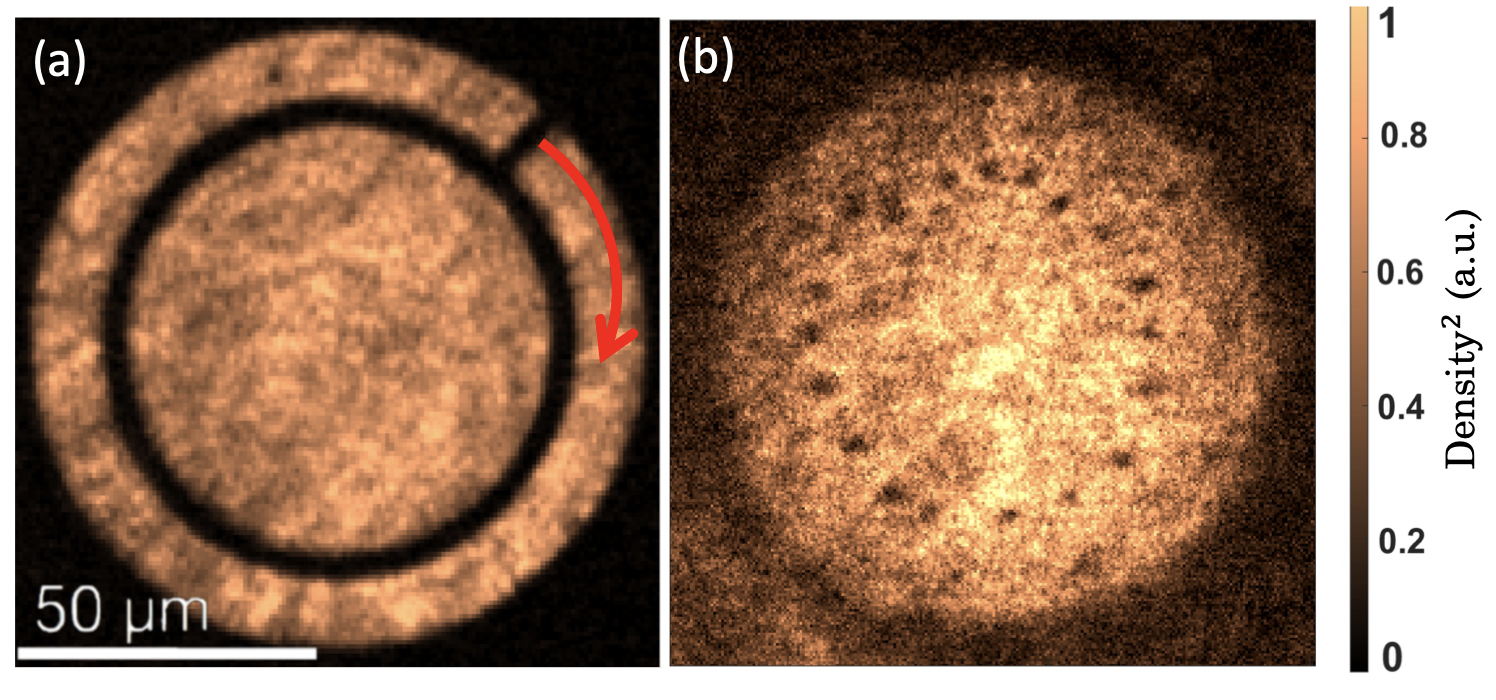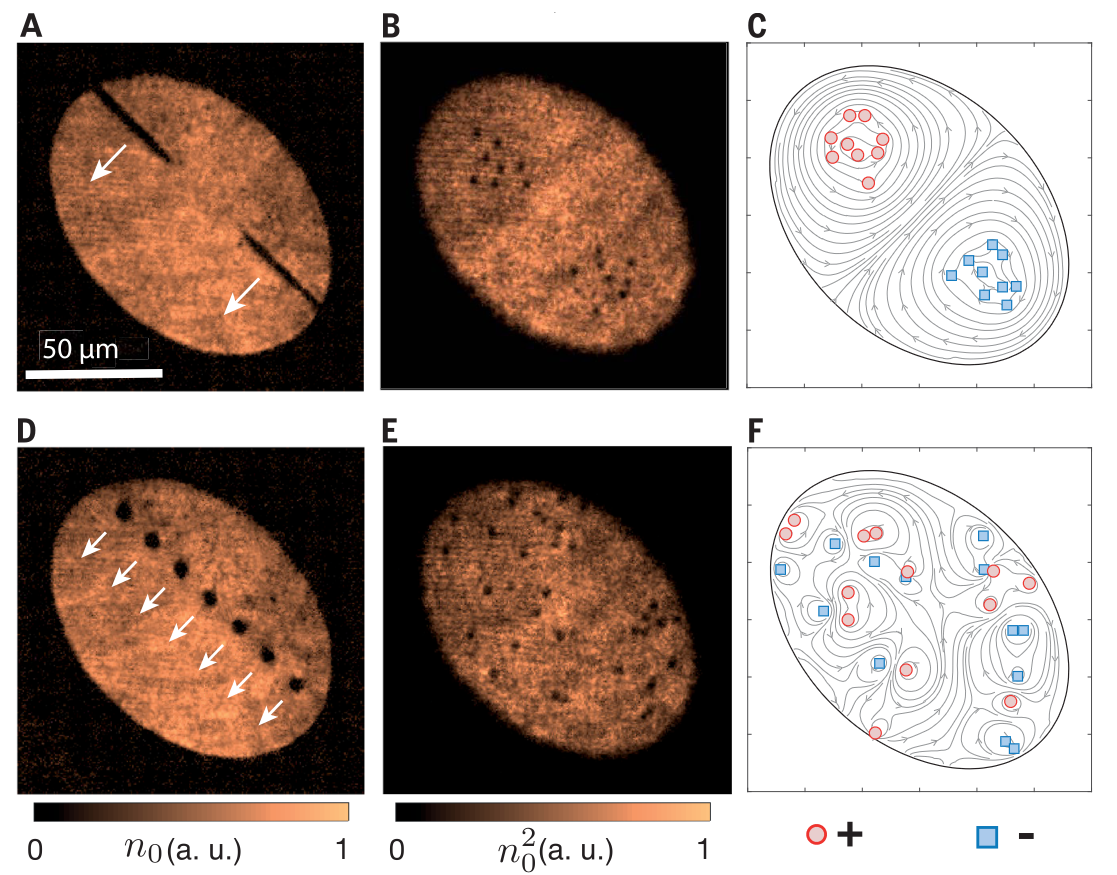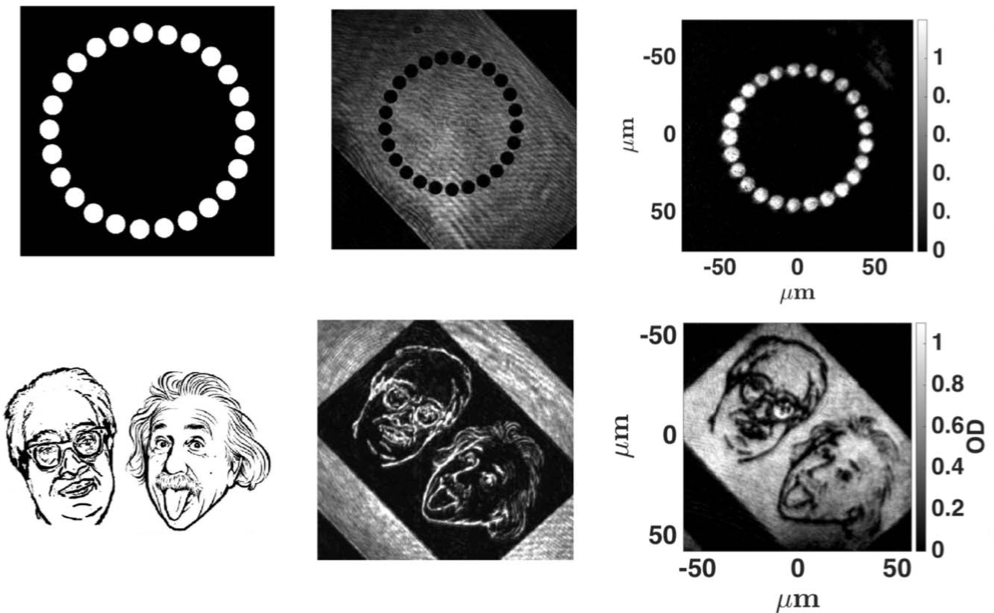Prof. Matthew Davis
Chief Investigator / Professor
Professor Matthew Davis' research examines quantum behaviour of ultra-cold gases and Bose-Einstein Condensation. He did his undergraduate studies in physics at the University of Otago in Dunedin, New Zealand, before completing his PhD at the University of Oxford in 2001 under the supervision of Professor Keith Burnett. His chief research interests are methods for nonequilibrium dynamics of Bose gases formation of BECs generation of correlations in ultra-cold gases computational physics.
Physics Annexe Room 06-325
mdavis@physics.uq.edu.au
+61 7 334 69824
Publications
The list below includes all publications associated with the UQ BEC lab. For a full list of publications, please click here.We study the creation and breakdown of a quantized vortex shear layer forming between a stationary Bose-Einstein condensate and a stirred-in persistent current. Once turbulence is established, we characterize the progressive clustering of the vortices, showing that the cluster number follows a power law decay with time, similar to decaying turbulence in other two-dimensional systems. Numerical study of the system demonstrates good agreement of the experimental data with a point vortex model that includes damping and noise. With increasing vortex number in the computational model, we observe a convergence of the power-law exponent to a fixed value.
We demonstrate a method for generating persistent currents in Bose-Einstein condensates by using a Gaussian process learner to experimentally control the stirring of the superfluid. The learner optimizes four different outcomes of the stirring process: (O.I) targeting and (O.II) maximization of the persistent current winding number and (O.III) targeting and (O.IV) maximization with time constraints. The learner optimizations are determined based on the achieved winding number and the number of spurious vortices introduced by stirring. We find that the learner is successful in optimizing the stirring protocols, although the optimal stirring profiles vary significantly depending strongly on the choice of cost function and scenario. These results suggest that stirring is robust and persistent currents can be reliably generated through a variety of stirring approaches.
Charles W. Woffinden, Andrew J. Groszek, Guillaume Gauthier, Bradley J. Mommers, Michael. W. J. Bromley, Simon A. Haine, Halina Rubinsztein-Dunlop, Matthew J. Davis, Tyler W. Neely, Mark Baker, SciPost Phys. 15, 128 (2023) - Published 2 October 2023
In this work, we cool down rubidium atoms to close to absolute zero to form a Bose Einstein Condensate. We form this condensate into a ring, then create sound waves travelling around the circumference of the ring. These sound waves (or phonons) create a standing wave in the density of the condensate, with high- and low-density points around the ring which act as markers. Due to the superfluid nature of the condensate, these markers stay in the same location of the ring and don’t rotate, even if the lab frame of reference is rotating (e.g. due to Earth’s rotation). This means that these markers act as an absolute frame of reference - like the north-seeking pole on a compass and so could potentially be used for navigation in situations where satellite navigation is not available e.g. under water.
M. Reeves et. al
Phys. Rev. X 12, 011031
In this work, we explored the relaxation of initially non-equilibrium configurations of vortices. Impressively, the vortex configurations in equilibrium were found to closely match the predictions of the point vortex model.
Stockdale Oliver R. et al, 2020
Physical Review Research, 2, 3
A large ensemble of quantum vortices in a superfluid may itself be treated as a novel kind of fluid that exhibits anomalous hydrodynamics.
Gauthier Guillaume et al, 2019
Physical Review Letters, 123, 26
We experimentally realize a highly tunable superfluid oscillator circuit in a quantum gas of ultracold atoms and develop and verify a simple lumped-element description of this circuit.
Gauthier Guillaume et al, 2019
Science, 364, 6447, pp. 1264-1267
Adding energy to a system through transient stirring usually leads to more disorder. In contrast, point-like vortices in a bounded two-dimensional fluid are predicted to reorder above a certain energy, forming persistent vortex clusters.
Bell Thomas A. et al, 2018
Physical Review A, 98, 1
Rapidly scanning magnetic and optical dipole traps have been widely utilized to form time-averaged potentials for ultracold quantum gas experiments.
Gauthier Guillaume et al, 2016
Optica, 10, 3, pp. 1136-1143
The development of novel trapping potentials for degenerate quantum gases has been an important factor driving experimental progress in the field. The introduction of spatial light modulators (SLMs) into quantum gas laboratories means that a range of configurable geometries are now possible.
Bell T A et al, 2016
New Journal of Physics
Interferometric measurements with matter waves are established techniques for sensitive gravimetry, rotation sensing, and measurement of surface interactions, but compact interferometers will require techniques based on trapped geometries.
Lenz Martin et al, 2013
Physical Review A, 88, 1
The study of dynamical tunneling in a periodically driven anharmonic potential probes the quantum-classical transition via the experimental control of the effective Planck's constant for the system.
Garrett Michael C. et al, 2011
Physical Review A, 83, 1
We study the formation of a Bose-Einstein condensate in a cigar-shaped three-dimensional harmonic trap, induced by the controlled addition of an attractive “dimple” potential along the weak axis.
Meppelink R. et al, 2009
Physical Review A, 80, 4
We observe the formation of shock waves in a Bose-Einstein condensate containing a large number of sodium atoms. The shock wave is initiated with a repulsive blue-detuned light barrier, intersecting the Bose-Einstein condensate, after which two shock fronts appear.
Schnelle S. K. et al, 2008
Optics Express, 16, 3, pp. 1405
We propose and investigate a technique for generating smooth two-dimensional potentials for ultra-cold atoms based on the rapid scanning of a far-detuned laser beam using a two-dimensional acousto-optical modulator (AOM).














